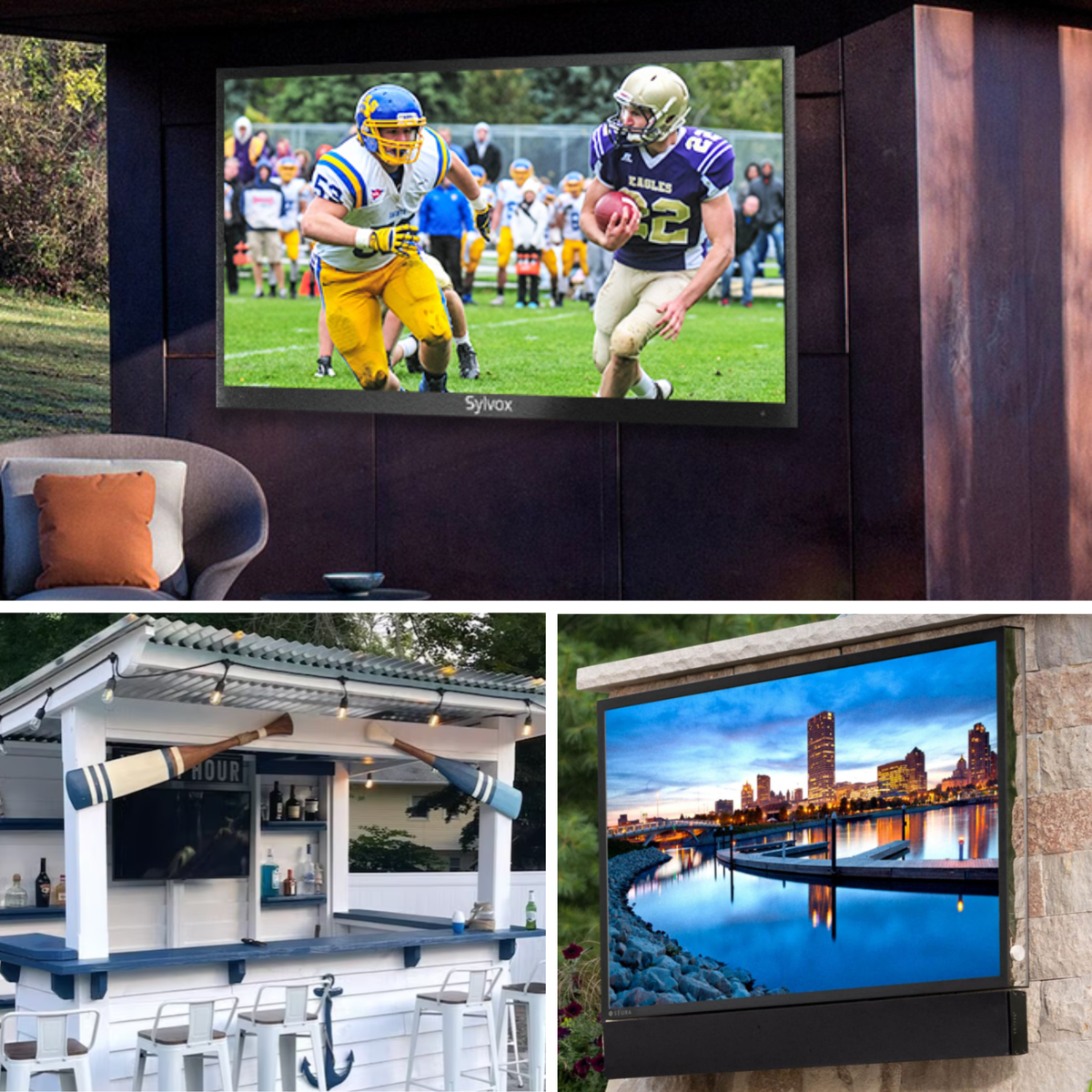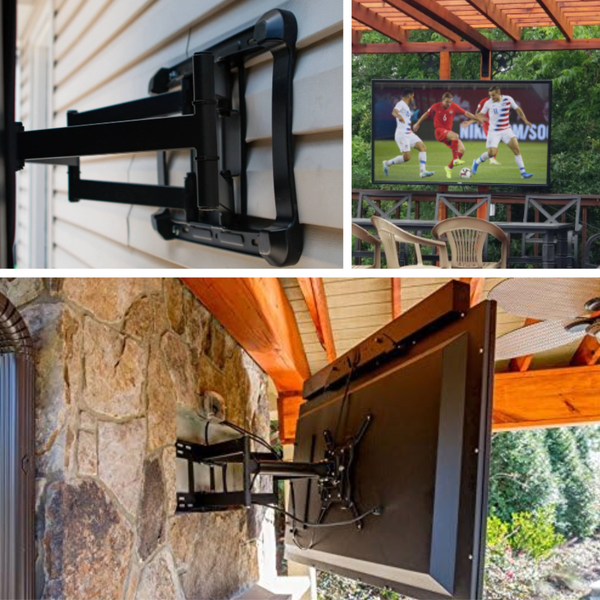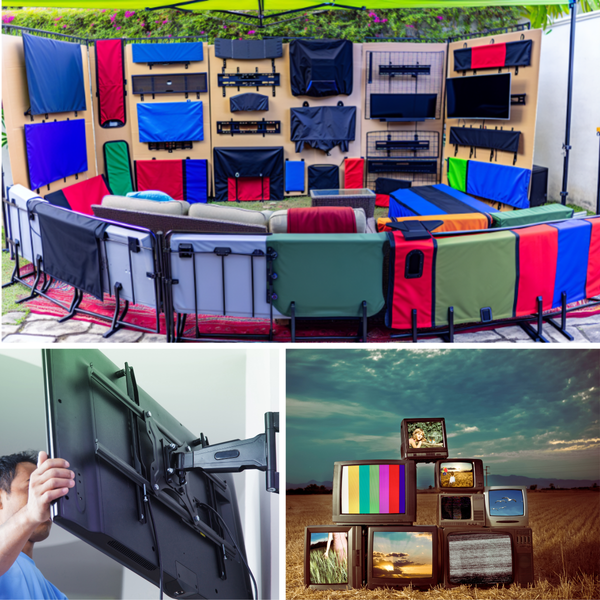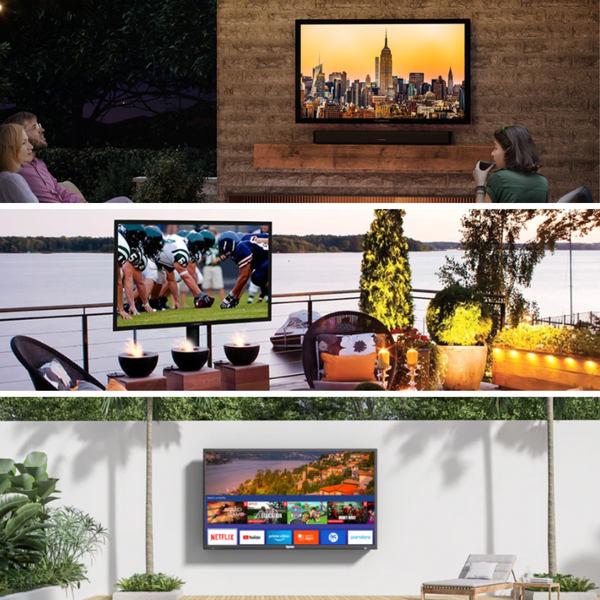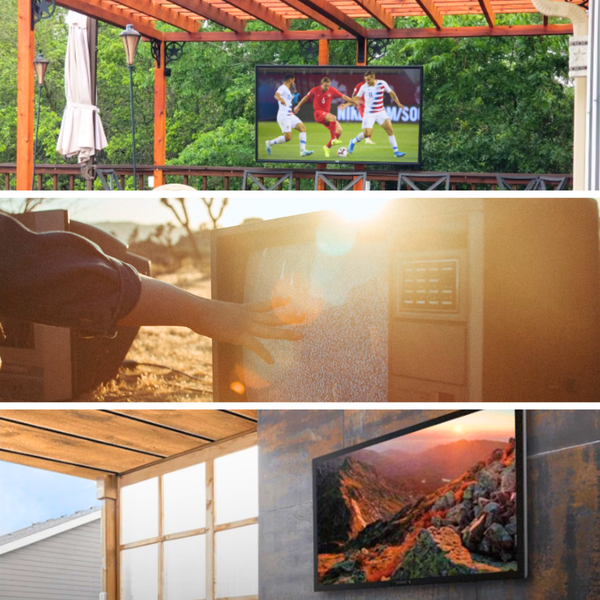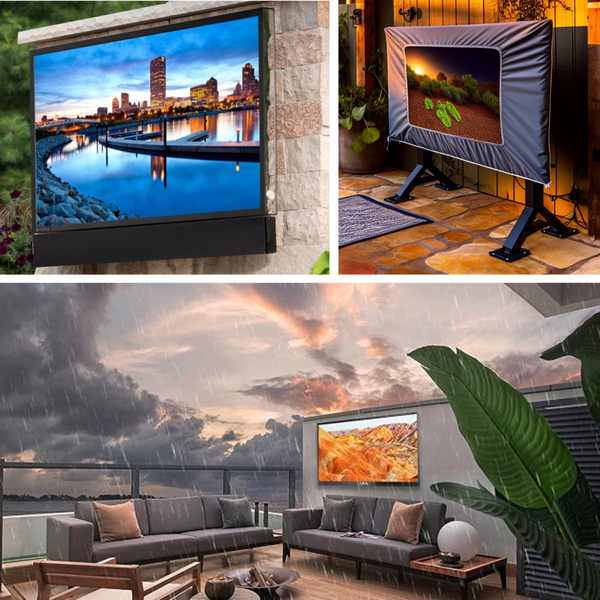Outdoor TVs have become a staple in many homes, offering an extension of the living space where friends and family can gather to enjoy entertainment in the fresh air. But when it comes to setting up your new outdoor TV, finding the ideal place is crucial for both performance and longevity.
Key Takeaways:
- Identifying the best location for an outdoor TV involves considering factors like sunlight exposure, weather protection, and viewing angles.
- Proper installation and the use of outdoor-rated TVs and accessories are essential for a durable and enjoyable outdoor entertainment setup.
- Integrating your outdoor TV into your existing outdoor space can enhance your entertaining space and overall outdoor experience.
Understanding Outdoor TVs vs. Indoor TVs
When considering where to place your outdoor TV, it's important to understand the difference between outdoor and indoor TVs. Outdoor TVs are designed with durable exterior frames, non-glare LED panels, and a UV light protective layer to withstand outdoor elements. In contrast, a regular TV lacks these features and may not fare well outdoors.
Outdoor rated TVs are built to endure temperature fluctuations and are often equipped with weather-stripped perimeters and high impact resin or powder-coated aluminum exteriors. This makes them a better choice for outdoor use than their indoor counterparts.

Assessing Your Outdoor Space
Before you decide where to place your outdoor TV, take a good look at your outdoor space. Consider how you typically spend time outdoors. Whether it's lounging by the pool, cooking in the outdoor kitchen, or gathering on the back deck, your activities can help determine the perfect outdoor tv setup.
Think about the flow of your space and how an outdoor television can complement it. The goal is to enhance your entertaining space without disrupting the existing layout or functionality.
Protection from the Elements
One of the primary concerns when installing a TV outside is protection from the weather. Look for locations that offer natural shelter, such as under an awning or roof. This will help shield your TV from rain and direct sunlight, which can damage the screen and internal components.
If a naturally protected area isn't available, consider adding an enclosure with lockable doors or a roof to protect your investment. These solutions can also help secure your TV against theft or tampering.
Sunlight and Screen Glare
To ensure the best viewing experience, place your outdoor TV in a location where it won't receive direct sunlight. This will prevent glare on the screen and make it easier to watch TV at any time of day. Non-glare LED panels are a feature of many outdoor TVs, but positioning still matters for optimal viewing.
An ideal place might be on a wall that faces north or south to minimize the amount of sunlight hitting the screen throughout the day. If this isn't possible, installing a shade or using landscaping to create shadow can be effective alternatives. Certainly! Below are two new sections that can be added to the existing content structure of the article.

Optimizing Outdoor TV Placement for Entertainment
When considering outdoor tv ideas, the ultimate goal is to create an entertainment oasis that complements your outdoor patio or deck. The placement of your outdoor rated TV should be strategic, not only for the best viewing experience but also to enhance the overall ambiance of your outdoor living space. Imagine hosting a summer movie night under the stars or enjoying the big game while barbecuing with friends. To achieve this, consider a wall mount that allows for flexibility in screen positioning, ensuring that everyone has a great view without straining their necks. Additionally, non glare LED panels are a must-have to combat the bright sun, ensuring that your picture quality is crisp and enjoyable at any time of day.
Incorporating your outdoor TV into the design of your patio requires thoughtful planning. For instance, placing the TV near a fireplace or adjacent to comfortable seating can create a cozy and inviting atmosphere. It's important to use weather stripped perimeters around the TV enclosure to protect against the elements, ensuring longevity. If you're considering a ceiling mount, make sure it's securely installed and offers the option to tilt or swivel for optimal viewing angles. Remember, the right placement not only provides an excellent viewing experience but also adds to the aesthetic appeal of your outdoor space.
Ensuring Durability and Longevity of Your Outdoor TV Setup
Outdoor TVs are built to withstand the elements, but additional measures can further protect your investment. Look for TVs encased in powder coated aluminum, which offers superior protection against rust and corrosion. This is particularly important in humid or coastal environments where salt air can be damaging. Moreover, a cover designed for your specific TV model can shield it from dust, debris, and any unexpected weather changes when the TV is not in use. These covers often have a soft interior lining to prevent scratches and are easy to put on and take off, making them a practical addition to your outdoor cable setup.
The durability of your outdoor TV is also dependent on the quality of the installation. Ensure that all components of your outdoor cable setup are rated for outdoor use, including cables and power supply units. This not only guarantees safety but also prevents potential damage from outdoor conditions. For instance, cables should be UV-resistant and capable of withstanding temperature fluctuations. Additionally, consider having a professional electrician install dedicated outdoor power outlets that are properly insulated and grounded. By taking these precautions, you can enjoy your outdoor entertainment system with peace of mind, knowing that it's built to last through seasons of sun and rain.

Viewing Distance and Angles
The size of your outdoor TV and the expected viewing distance should influence where you install it. A larger screen size may require a more spacious area, while smaller TVs can be placed in cozier spots. Ensure that the location allows for comfortable viewing from different angles, so everyone can enjoy the big game or movie night.
Wall mounts that can tilt or swivel are excellent for adjusting the screen angle to accommodate various viewing positions. This flexibility is particularly useful in outdoor settings where seating arrangements can be more fluid.
Integrating with Outdoor Features
Your outdoor TV should complement the features of your backyard. If you have a pool, consider placing the TV in a spot where swimmers can watch without leaving the water. Near a fireplace or fire pit, a TV can add to the cozy atmosphere for evening gatherings.
For those who love to grill, positioning your TV near the grill station or outdoor kitchen allows the chef to join in the entertainment while cooking. This setup can turn cooking time into an engaging part of your outdoor activities.

Cable Management and Power Supply
An often-overlooked aspect of outdoor TV installation is managing cables and power supply. Loose wires not only pose a safety hazard but can also detract from the aesthetics of your outdoor space. Use pipe coverings or caulked seams to conceal cables and ensure that all connections are weatherproof.
If you're using an extension cord, make sure it's rated for outdoor use and is long enough to reach your TV without stretching. It's best to have a dedicated power outlet installed by a professional to avoid the need for extension cords altogether.
Safety and Security
When placing your outdoor TV, consider the security of the device. Areas that are not easily visible or accessible from the street can deter potential theft. Additionally, using a mount with a locking mechanism or installing the TV within a secure enclosure can provide extra peace of mind.
It's also important to ensure that the installation is done correctly to prevent accidents. A properly mounted TV should be attached to an existing wall or feature wall with the appropriate hardware to handle its weight.

Summary
Choosing the best place to put an outdoor TV requires careful consideration of several factors, including protection from the elements, sunlight exposure, viewing angles, and integration with your outdoor space. By selecting an outdoor-rated TV and ensuring proper installation, you can create a perfect outdoor TV setup that enhances your backyard entertainment experience.
FAQ Section
Q: Can I use a regular indoor TV for outdoor use?
A: While it's possible to use an indoor TV outdoors, it's not recommended. Outdoor TVs are specifically designed to withstand weather conditions and have features like durable exterior frames and UV light protective layers that regular TVs lack.
Q: How do I protect my outdoor TV from theft?
A: To protect your outdoor TV from theft, consider placing it in a less visible area from the street, use a mount with a locking mechanism, or install it within a secure enclosure with lockable doors.
Q: What is the ideal distance for viewing an outdoor TV?
A: The ideal viewing distance for an outdoor TV depends on the screen size. A general rule of thumb is to sit at a distance that is approximately 1.5 to 2.5 times the diagonal screen size of the TV. This range allows for a comfortable viewing experience without straining your eyes.



